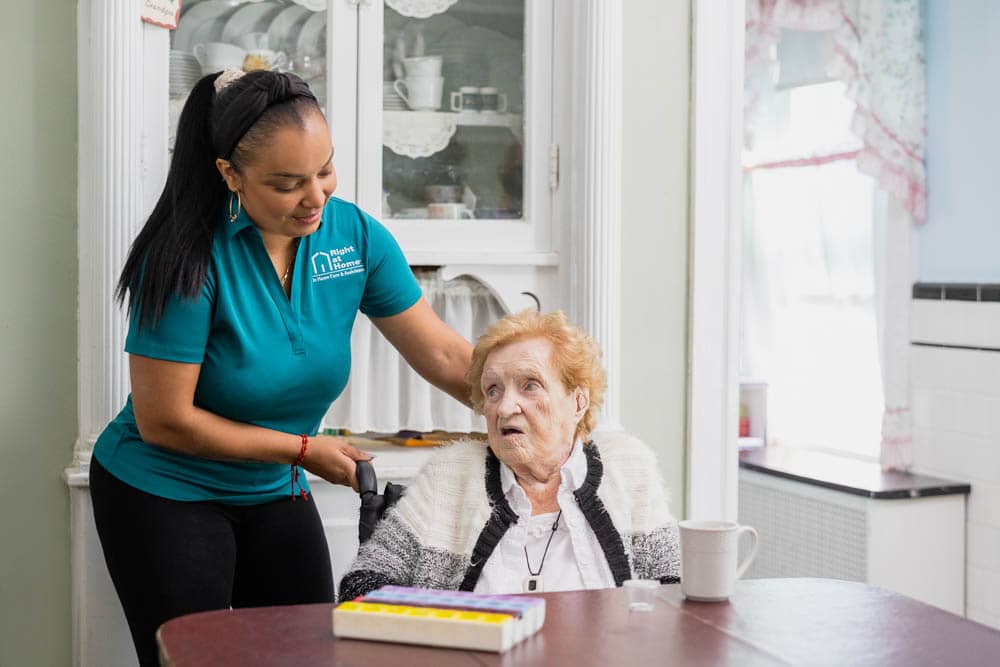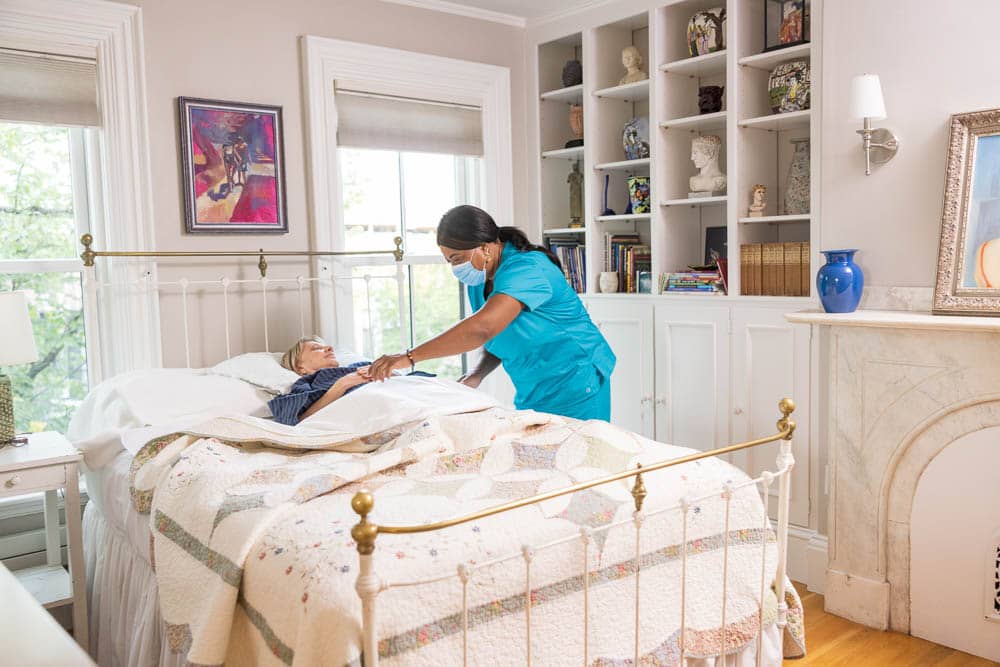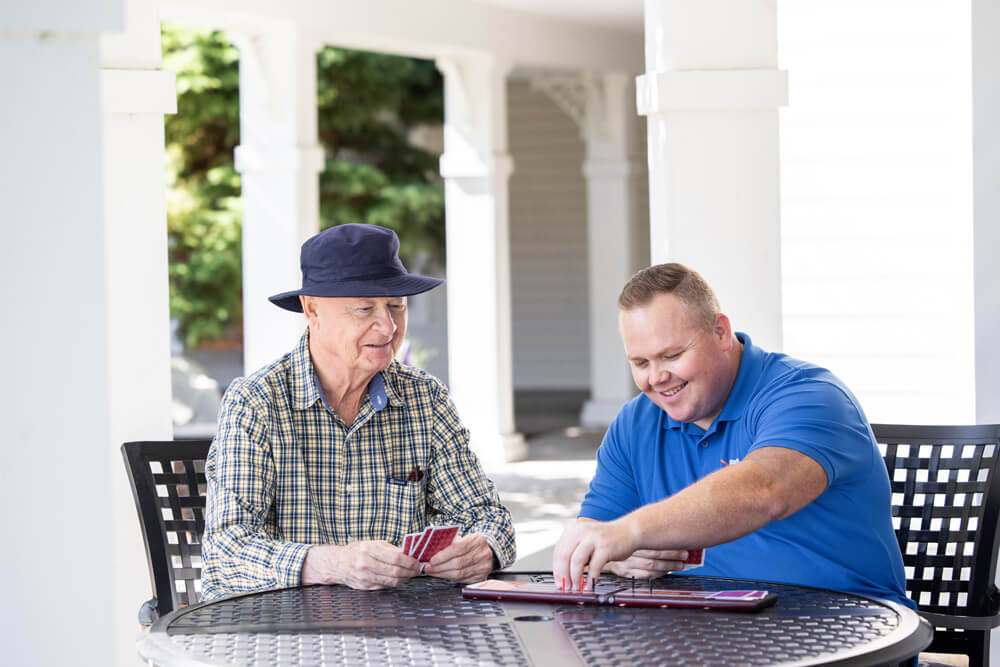

Paying for In-Home Care
Need help right now? Call us anytime at
(262) 654-5410
Private Pay


Long-Term Care Insurance
A long-term care insurance policy can be a great option to help pay for home care, as the policy can provide a set dollar amount available to fund care on a daily/weekly/annual basis. If you're not sure whether your loved one has a long-term care insurance policy, ask them or check records for a copy of the policy or a history of payments to an insurance company.
Collecting benefits from your long-term care insurance policy can be daunting if you're not familiar with the process. Right at Home has partnered with the American Association for Long-Term Care Insurance to develop free tips to help clients access their long-term care insurance benefits as quickly and easily as possible.


Long-Term Care Benefit Plan
A long-term care benefit plan is the conversion of an in-force life insurance policy into an irrevocable, FDIC-insured benefit account. An unneeded life insurance policy is sold for a percentage of the death benefit (the range can be between 20% and 60%) and the funds are immediately available to pay for senior care.
Once enrolled in the benefit plan, tax-advantaged monthly payments are made directly from the account to cover any form of senior care: home care, assisted living, nursing home, memory care, and hospice.


Reverse Mortgage
A reverse mortgage is a loan that enables senior homeowners, age 62 and older, to convert part of their home equity (primary residence only) into tax-free income without having to sell their home, give up title to it, or make monthly mortgage payments.
You don’t need to repay the loan as long as you or another borrower continues to live in the house and keep the taxes paid and insurance in force. The loan only becomes due when the last borrower permanently leaves the home, at which time the reverse mortgage principal, interest charges, closing costs and service fees are typically paid back from the sale of the house.


Viatical Settlements


Senior Living Loans


Veterans Aid and Attendance (A&A)
Veterans and their surviving spouses who require the regular aid and attendance of another person for activities of daily living, such as bathing, dressing, medication monitoring, etc., may qualify for a special Aid and Attendance (A&A) benefit, in addition to their monthly pension. This benefit is available to honorably discharged veterans and their surviving spouses who meet eligibility criteria. Assets are included in the equation for eligibility, with exclusions for personal property such as the veteran’s home or vehicle. For additional A&A benefit information, visit the U.S. Department of Veterans Affairs website.


Genworth Cost of Care 2020 Survey
For years, Genworth has helped the aging population navigate caregiving options and compare costs. Below is a breakdown of types of care and their costs.
| Care Type | National Average Cost |
|---|---|
|
Adult Day Care |
** $ 1,603 per Month |
|
Assisted Living |
** $ 4,300 per Month |
|
Nursing Home |
** $ 8,821 per Month |
|
In-Home Care |
* $ 4,074 per Month |
* Based on annual rate divided by 12 months (assumes 40 hours per week)
** Based on annual rate divided by 12 months


In-home Care Offers An Affordable Alternative to Assisted Living
Assisted Livings Generally Create a One Size Fits All Plan
Assisted Livings generally run on an overall schedule. Meals are usually at scheduled times. For example, breakfast may be served at 7am, Lunch at noon, and Dinner at 5pm. There may be assigned shower times if assistance is required and you might experience scheduled laundry and housekeeping times. The care you receive is on their schedule, not necessarily when it's most convenient for you.
Assisted Living Costs Can Vary Depending on the Individual's Needs
With Assisted Living, your base monthly cost may start around $3500, a shower 3 times per week for a month might add another $400 to $500, medication management another $200, with any other required assistance adding dollars to that monthly charge. We will estimate your monthly charge at $4300 per month.

Right at Home Provides a Custom Plan, Specific to Your Needs
Home Care by comparison would be customized to your needs all in the comfort of your own home. You would decide the time of day for your meals, the days and times of the week for your showers, and with the local pharmacies ability to simplify your medication packaging, your med management would be simplified.
Custom Care With Flexible Scheduling
For example, if we were to estimate a requirement of approximately 30 hours per week, we may be providing care Monday through Friday, three hours in the morning and three hours in the evening based on your schedule.
We would be making meals, assisting with showers, running errands, doing laundry, light housekeeping and if necessary transporting you to appointments. All of this for under $3000 per month. If weekend hours were required, we would plan abbreviated shifts of two 2 hr shifts per day far an additional $100 per day or monthly total of approximately $3200.
You may even find that six hours per day is not enough and may increase it to eight hours per day all or some of the days if needed.
Providing Care in the Home
At home, you are surrounded by your belongings and you have the comfort and familiarity of your own home. You decide what meals you want prepared, and when. Perhaps you have a pet that you would like to keep. You are in charge of your environment. You are not forced to take meals in a communal setting or at an inconvenient time.
Your Caregiver is there for you and you alone, not shared with 10 or 12 other residents. You can choose the cleaning supplies your caregiver would utilize.
This familiarity is especially important to someone suffering from Alzheimer's or Dementia. Taking someone out of their comfort zone and placing them in a different living environment can be detrimental, in some case increasing their symptoms.




